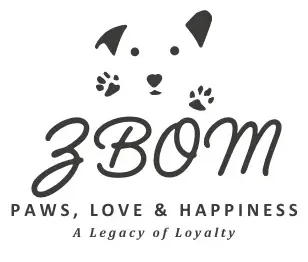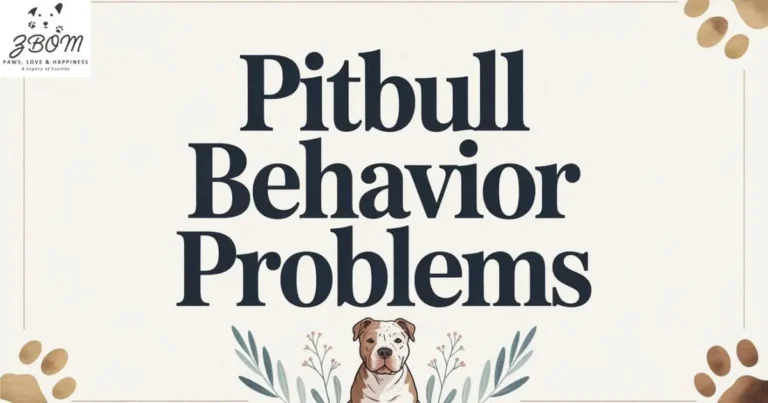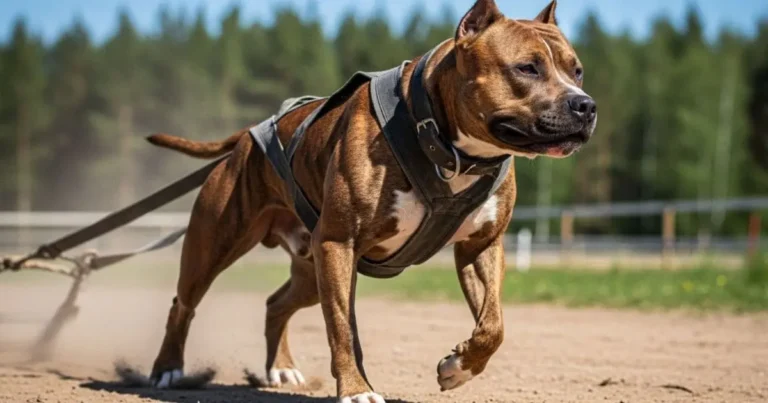
How To Make More Pitbull As Nanny Dogs By Doing Less
Pitbull As Nanny Dogs have earned a unique reputation for being gentle, loyal, and protective, making them ideal companions for families with children. Many people are surprised to learn that Pitbull As Nanny Dogs are affectionate, patient, and trustworthy, contrary to common stereotypes about the breed.
With proper training and socialization, Pitbull As Nanny Dogs can provide both safety and love, showing remarkable courage and devotion. These dogs combine playful energy with a caring nature, proving why Pitbull As Nanny Dogs are reliable, loving, and ideal guardians for children.
The “nanny dog” label attached to pit bulls has sparked countless debates among dog lovers, historians, and breed advocates. While some champion the idea that pit bulls once served as trusted guardians of children, others dismiss it as modern myth-making.
The truth is more nuanced than either camp suggests. Rather than exhausting yourself trying to transform every pit bull into a picture-perfect family companion through intensive training regimens and constant supervision, the key lies in understanding what these dogs actually need—and what they don’t.
This isn’t about doing nothing. Pitbull As Nanny Dogs It’s about doing what matters. Pit bulls, like any breed, thrive when their natural temperament is respected rather than reshaped. They need consistent boundaries, not micromanagement. They benefit from socialization, not forced interactions.
By stripping away the pressure to prove something about the breed and focusing instead on the individual dog in front of you, you create space for genuine trust to develop. Sometimes the most powerful thing you can do is step back, observe, and let your dog show you who they really are—quirks, strengths, and all.
The path forward isn’t paved with exhaustive protocols or defensive rhetoric. It’s built on honest assessment, realistic expectations, and the simple act of meeting your dog where they are.
Also Read: How Old Does a Dog Have to be to breed
Short answer about: Nanny Dog
The term “Nanny Dog” is often used to describe certain dog breeds that are exceptionally gentle, loyal, and protective, particularly around children. Despite common misconceptions and negative stereotypes surrounding some of these breeds, they are widely recognized for their affectionate and caring nature. The Staffordshire Bull Terrier, for example, is one of the most well-known “Nanny Dogs” and has earned this nickname due to its reputation as a trustworthy family companion.
Nanny Dog
Understanding the Dual Nature of Pit Bulls
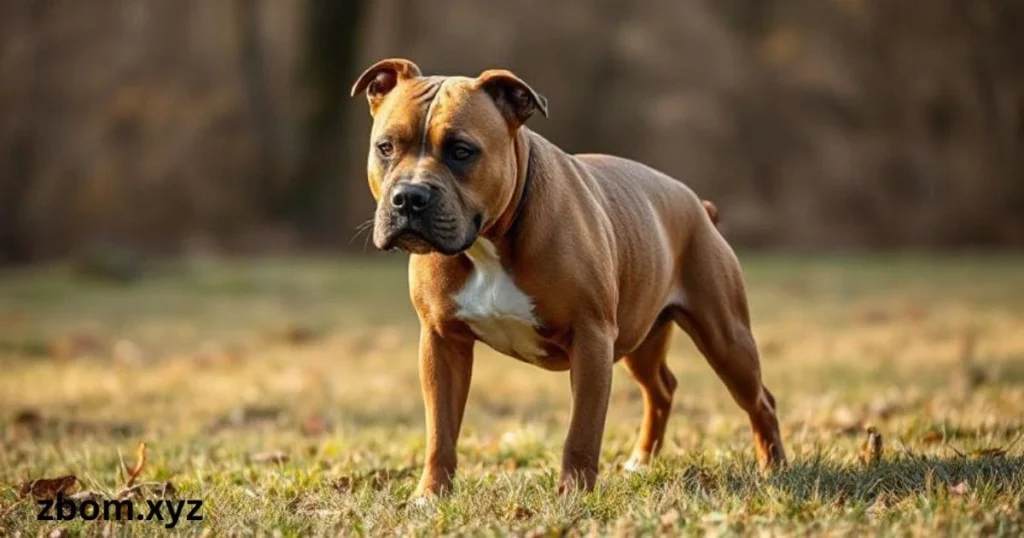
The debate surrounding pit bulls and nanny dogs continues to divide dog lovers and breed advocates. These companion dogs carry a complex reputation shaped by both tragedy and devotion. Statistics show that aggressive dogs labeled as pit bulls were responsible for 232 deaths between 2005 and 2015, yet these same family pets demonstrate intelligence, hard work, courage, affection, and loyalty that define their long pedigree.
The Historical Context of Staffordshire Bull Terriers
Staffordshire Bull Terriers originated in Birmingham England during the 1800s dogs era. Initially bred as guard dogs, these muscular dogs served in the brutal blood sport of bull baiting and bear baiting, practices dating back to the 12th century. The 1835 ban officially ended bear and bull baiting in the UK, but dog fighting persisted until the 1976 ban in both UK USA ban regions, leaving fighting dogs trapped in criminal fighting rings for generations.
American Pit Bull Terrier: A Tamer Version
When the terrier breed reached 19th century America, American breeders developed a tamer version known as the American Pit Bull Terrier. This optimized breed showcased a protective personality while maintaining the breed traits of loyal dogs. The transformation focused on creating valued family members rather than fighting dogs, though their checkered past and turbulent past remained part of breed history.
Cultural Icons and Breed Reputation
Little Rascals introduced America to Petey dog, whose real name was Pal the Wonder Dog. This bullseye dog became a symbol of family dogs compatible with young children. However, fictional dogs like Sikes dog in Oliver Twist portrayed mean dogs associated with unsavory characters,Pitbull As Nanny Dogs contributing to perspective change and misleading information about the entire terrier breed.
Also Read: How to Choose the Best Whelping Box French Bulldogs
The Nursemaid Dog Perspective
Lillian Rant, president of the Staffordshire Terrier Club of America, described breed temperament by stating the breed “quickly becomes a member of the family circle” and is “often referred to as a nursemaid dog.” Her assessment emphasized their compatibility with children and dogs relationships, noting these friendly dogs accept invited guests while showing no fear toward trespassers.
AKC Recognition and Show Success
On January 1, 1972, the breed gained AKC registered status in miscellaneous class, allowing participation in dog shows. The Bull Terrier’s Best in Show victory at Westminster Kennel Club in 2006 demonstrated that terrier groups and terrier wins could overcome breed reputation challenges, proving these dog breeds met breed standard requirements.
The Role of Owner Responsibility
The core issue isn’t inherent aggression but owner responsibility. These protective dogs possess an overpowering desire to please owners, which becomes problematic when bad behavior is encouraged. Dog behavior reflects training and environment more than breed pedigree alone. Abuse and neglect by shady people and criminally exploited situations created trained dogs for blood thirst entertainment in fighting rings.

Modern Understanding of Canine Behavior
Dog temperament and canine behavior studies reveal that family pets of any breed require proper socialization. The pit bulls and pitbull category encompasses multiple dog breeds, each with distinct breed traits. Real people must move beyond viral statements and recognize that children and dogs interactions depend on individual temperament, not stereotypes.
Also Read: How to Estimate Long Haired French Bulldog Cost
Breaking the Cycle
Nearly two centuries after the 1835 ban on bull baiting, these companion dogs still battle stigma from dog attacks and dog fighting history. The miscellaneous information surrounding nanny dogs often lacks context about how fighting dogs were created through human exploitation rather than natural breed temperament.
The Path Forward
Creating more nanny dogs requires doing less forcing and more understanding. These valued family members with their long pedigree deserve assessment based on individual dog behavior rather than fear-driven legislation. Their intelligence, courage, affection, and loyalty toward the family circle emerge naturally when abuse and neglect are replaced with proper care.
Also Read: How Long are French Bulldog pregnant
The journey from Birmingham England fighting rings to American family pets reflects both humanity’s capacity for cruelty and redemption. Whether discussing American Pit Bull Terrier, Staffordshire Bull Terriers, or Bull Terrier breeds, the focus must shift from sensationalized dog attacks statistics to responsible breeding and owner responsibility that honors both the breed history and future potential of these remarkable companion dogs.
Reversing Nanny Dog Character Assassination
The Origin of Misinformation
The nanny dog moniker surrounding pit bulls stems from well-meaning persons who created a myth to counter breed stigma. This spreading moniker, while well intentioned, constitutes false information that breed defenders and pit bull advocates must address honestly. The misinformation doesn’t serve the pit bull cause when scrutinized, yet it reveals a deeper truth about these misunderstood animals.
What Loyal Pit Bull Owners Confirm
Loyal pit bull owners and loyal owners across the nation stand up for breed characteristics based on owner testimony and personal experience. These breed defenders confirm qualities that define the pit bull breed dog through daily interactions:
Redeeming Qualities of Affectionate Dogs:
- Affectionate nature that makes them loving dogs and people pleaser companions
- Couch potato dogs who prefer relaxation over constant activity, showcasing their lazy dogs tendencies
- Lover not fighter mentality despite breed myths suggesting otherwise
- Wonderful with children and gentle with children, demonstrating child friendly behavior
- People dog characteristics making them human oriented and family oriented
- Friendly dogs who welcome interaction rather than confrontation
- Natural caretakers with strong caretaking instinct toward family members
The Reality Behind Gentle Nature
The gentle nature of these affectionate dogs contradicts the non aggressive reputation that breed defense efforts highlight. Dog owners fighting for fair treatment emphasize that unfair targeting has made pit bulls the current breed scapegoat, though history shows another breed or next target breed will eventually face similar breed stigma.
Also Read: How many puppies Do French Bulldog Have
Notable Figures and Their Fondness for Pit Bulls
Historical dog owners and famous pit bull owners include notable figures whose fondness for pit bulls shaped public perception during their era:
Celebrity Dog Owners and Historical Pets:
- Theodore Roosevelt kept presidential pets that included pit bull breeds
- Helen Keller owned dogs, potentially a Boston Terrier, showing her appreciation for terrier breeds
- Thomas Edison maintained famous owners status with his pit bull companions
- Laura Ingalls Wilder documented her connection to these historical pets
- Humphrey Bogart and Fred Astaire joined other celebrity pets enthusiasts who appreciated the breed
These celebrity dog owners and famous owners demonstrated through their historical dog owners status that the breed possessed qualities worthy of admiration, contributing to breed defense long before modern pit bull advocates emerged.
Moving Beyond the Scapegoat Breed Cycle
The pattern of creating a scapegoat breed repeats throughout history. Today’s pit bull breed dog faces unfair targeting that previous breeds endured. Eventually, another breed will become the next target breed, continuing the cycle of breed myths and breed stigma that dog owners fighting for justice must challenge.
Owner Testimony Versus Breed Myths
Personal experience from loyal pit bull owners provides more reliable information than spreading moniker campaigns based on myth. These people dog companions exhibit:
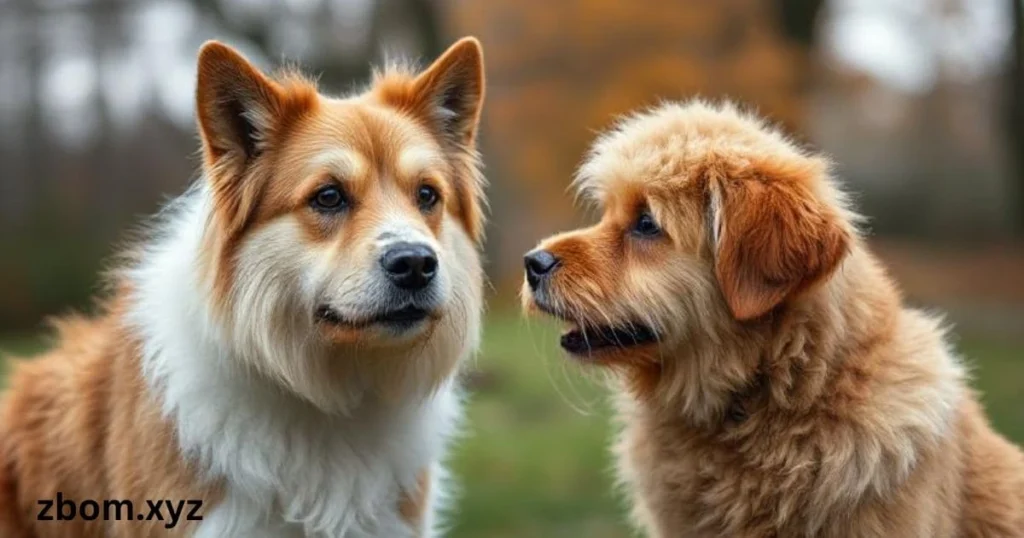
- Caretaking instinct that makes them natural caretakers
- Family oriented behavior showing they’re loving dogs
- Human oriented focus proving their people pleaser nature
- Child friendly temperament confirming they’re wonderful with children and gentle with children
- Affectionate nature demonstrating why they’re considered affectionate dogs
- Lazy dogs tendencies as couch potato dogs who prefer comfort
- Non aggressive disposition revealing their lover not fighter personality
The Well Intentioned but Flawed Approach
While well-meaning persons created the nanny dog moniker with positive intentions, this well intentioned effort became misinformation and false information that undermines credible breed defense. Pit bull advocates and breed defenders must acknowledge that the myth doesn’t serve the pit bull cause when it can be easily disputed.
Celebrity Pets Throughout History
The connection between notable figures and their fondness for pit bulls spans generations. Presidential pets, historical pets, and celebrity pets owned by famous pit bull owners like Theodore Roosevelt, Helen Keller, Thomas Edison, Laura Ingalls Wilder, Humphrey Bogart, and Fred Astaire demonstrate that historical dog owners recognized redeeming qualities in these companion animals.
Also Read: When can Male Dogs Get Females pregnant
The Real Legacy of Loyal Owners
Dog owners fighting for breed recognition don’t need the myth to stand up for breed characteristics. Owner testimony based on personal experience with these friendly dogs, natural caretakers, and people dog companions provides authentic evidence of their gentle nature, caretaking instinct, and affectionate nature.
The cycle that creates each breed scapegoat and next target breed through unfair targeting will continue unless breed myths give way to honest assessment. These family oriented, human oriented, child friendly companions deserve breed defense based on truth rather than spreading moniker campaigns rooted in misinformation. Their status as loving dogs, couch potato dogs, and lover not fighter personalities speaks louder than any false information created by well intentioned but misguided well-meaning persons.
Pitbulls As Nannies
The Article Aims to Correct Fallacies
This article aims to address spreading lies and false narratives that have plagued the dog breed community for years. The most persistent myth requires immediate correction: pit bulls never called nannies or nanny dogs. Period. This invented history and phony history serve no purpose except to create confusion and undermine credible breed facts.
Stop Spreading Untruths and Misinformation
The time has come to stop spreading untruths and stop misinformation that damages rather than helps. Using fake names and phony labels doesn’t help species or advance responsible ownership. Breed myths debunked through accurate information and honest assessment provide the foundation for real understanding of breed truth.
What’s True About Pit Bulls
The breed truth reveals that true about pit bulls centers on their nature as powerful dogs and strong dogs. However, the fundamental principle remains: a dog is a dog. Any dog dangerous enough to cause harm exists across all breeds. Even Pomeranians and small dog aggression demonstrate that deadly killers can emerge from unexpected sources, proving bite potential and aggression potential aren’t exclusive to the powerful breed category.
Why Terrier Breed Owners Choose These Dogs

Terrier breed owners and dog enthusiasts select their companions based on the look of dog and character of dog that appeals to them. The breed appeal extends beyond physical appearance to encompass breed characteristics that define the pit bull group.
Also Read: How much are Fluffy French Bulldog
The Commitment to Proper Training
Dedicated individuals have worked tirelessly to train well-balanced dogs and calm dogs while providing community support to help others achieve the same results. These training efforts focus on behavioral training and proper training methods that develop balanced temperament and even temperament in their animals.
What People Love About the Breed
Dog lovers and people love the pit bull group for specific qualities that demonstrate breed facts rather than breed myths debunked narratives:
Core Breed Characteristics:
- Affectionate nature that creates strong bonds with families
- Superior intelligence placing them among intelligent dogs and smart dogs
- Quick learning ability showcasing their trainability and easy to train disposition
- Fun dogs with entertaining dogs qualities and playful nature
Responsible Ownership and Dog Training
The foundation of success lies in dog training approaches that emphasize responsible ownership. Training efforts directed toward creating calm dogs and well-balanced dogs require commitment but yield rewarding results. The combination of behavioral training and proper training techniques helps develop balanced temperament across the breed.
Correcting the Narrative with Accurate Information
Moving forward requires correct information rather than false narratives. The species benefit when honest assessment replaces invented history and phony labels. Breed truth acknowledges that powerful dogs require responsible handlers who understand that any dog dangerous situations can be prevented through proper training.
Understanding Bite Potential and Aggression Potential
All breeds carry bite potential and aggression potential. The dangerous animal label applies when training fails, regardless of size. Small dog aggression from Pomeranians proves that deadly killers aren’t determined by breed alone but by circumstances and handling.
The Reality of Powerful Breeds
How much is a Frenchie, Strong dogs and powerful breed animals demand respect and understanding. True about pit bulls includes acknowledging their strength while recognizing that a dog is a dog with individual personality shaped by environment and training efforts.
Community Support and Help Others
Those who worked tirelessly to advance breed facts provide community support to help others understand these companions. Dog enthusiasts share knowledge about dog training, behavioral training, and proper training methods that produce calm dogs with even temperament.
The Appeal of Intelligence and Trainability
The breed appeal stems from superior intelligence that makes them smart dogs with quick learning ability. Their easy to train nature and trainability attract terrier breed owners seeking intelligent dogs capable of mastering complex tasks.
Beyond Physical Characteristics
The look of dog attracts initial attention, but the character of dog determines lasting relationships. The pit bull group offers affectionate nature combined with entertaining dogs qualities that make them fun dogs for active families.
Moving Forward with Breed Facts
This article aims to establish correct information as the standard. Pit bulls never called nannies—period. Stop spreading untruths, fake names, phony history, and invented history that doesn’t help species or advance understanding.
The Balanced Perspective
Honest assessment recognizes powerful dogs require responsible ownership while celebrating affectionate nature, superior intelligence, quick learning ability, and playful nature. The breed truth shows that proper training, behavioral training, and training efforts create well-balanced dogs with balanced temperament and even temperament.
What happened to the idea of the pit as a nanny dog?
A Beloved Dog Breed Through History
At one time, pit bulls stood as a beloved dog breed cherished by pit owners nationwide. While unscrupulous individuals exploited the bully breed for nefarious purposes, the vast majority served as beloved family pets. These versatile animals excelled in livestock control and guarding home responsibilities, demonstrating their value beyond fighting rings.
Also Read: How To Determine Black French Bulldog Cost
Understanding the Four Different Types
The pit bulls types encompass four different types of distinct breeds:
The Four Breeds:
- American Pit Bull Terrier: A cross between terrier breeds and bulldogs cross that created the foundation breed
- American Staffordshire Terrier: Descendant of pits originally used for pit dog fighting and bull baiting, later adapted for livestock purposes and hunting dogs roles
- Staffordshire Bull Terrier: Breeds unto themselves with unique characteristics separate from American variants
- American Bully: Made Little Rascals famous through Petey dog, who became the epitome friend to children
Historical Roles and Functions
The American Staffordshire Terrier descended from lines involved in pit dog fighting and bull baiting but evolved into livestock purposes specialists and hunting dogs. By all accounts, the American Staffordshire functioned as a great pet when properly socialized and trained for work rather than nefarious activities.
How the Negative Reputation Developed
Those who needed to guard premises during nefarious activities selected pit bulls and American Staffordshires for protection. These animals were taught to attack anything and everything, creating the foundation for the negative reputation that plagues the breed today. When trained as aggressive dogs and dangerous dogs, they fulfilled the expectations of their handlers, leading to pit bull attacks that shaped public perception.
The Rise of Breed Bans

As pit bull attacks became common, laws banned ownership across various jurisdictions. These breed bans and spring up laws targeted the bully breed specifically, though other breeds category faced similar discrimination. German Shepherds developed a bad reputation for turning on owners despite unfounded claims. Rottweilers and Dobermans continue to fight negative reputation challenges similar to what pit bulls experience.
The Temperament Test Results
The American Temperament Test Society provides objective data through ranked dog breeds assessments measuring level of tolerance. Results reveal surprising truths:
Tolerance Rankings:
- Most tolerant dog: Golden Retriever, maintaining great reputation for tolerating boisterous children
- Pit bull ranked second: Among most tolerant dogs, contradicting popular misconceptions
- Least tolerant dog: Chihuahua, ironically the breed parents procure based on widespread belief they help child allergies
Debunking the Victim Bad Rap
For many years, pit bulls have been victim bad rap based on myths rather than facts. Common misconceptions include claims about jaws that lock and the bite of pit bull being the most powerful bite. While these dogs possess strong jaws and powerful bite force, they do not have jaws lockdown capabilities that permanently lockdown victim as folklore suggests.
Also Read: How to Determine Frenchie Dog Prices Effectively
The Truth About Bite Force
The most powerful dog bites on record belongs not to pit bulls but to the Rottweiler bite. This fact challenges assumptions about which breeds pose the greatest bite risk, yet Rottweilers continue to fight negative reputation alongside pit bulls in the other breeds category affected by breed bans.
The Role of Beloved Family Pets
At one time and continuing today, pit owners who treat their animals as beloved family pets demonstrate the breed’s capacity for companionship. These beloved dog breed representatives assist with livestock control, guarding home duties, and serving as hunting dogs when given proper training and socialization.
The Impact of Unscrupulous Individuals
The damage caused by unscrupulous individuals who exploit the bully breed for nefarious purposes extends beyond individual incidents. When animals are taught to attack and attack everything, they reinforce the negative reputation that affects all four different types within the pit bulls types category.

Little Rascals Famous Legacy
The American Bully became Little Rascals famous through Petey dog, demonstrating the epitome friend to children potential. This cross between terrier breeds and bulldogs cross showed that breeds unto themselves could excel in family environments when treated as beloved family pets rather than tools for nefarious activities.
Historical Working Roles
The descendant of pits originally bred for pit dog fighting and bull baiting transitioned successfully to livestock purposes and hunting dogs applications. The American Staffordshire Terrier proved itself a great pet while maintaining working abilities for guarding home and livestock control tasks.
The Pattern of Breed Discrimination
German Shepherds faced bad reputation for turning and turning on owners based on unfounded claims. Rottweilers and Dobermans similarly fight negative reputation challenges, demonstrating how breed bans and spring up laws target specific breeds within the other breeds category based on isolated incidents rather than comprehensive data from the American Temperament Test Society.
Scientific Evidence from Ranked Dog Breeds
The level of tolerance measured by ranked dog breeds studies contradicts popular assumptions. The most tolerant dog status of Golden Retriever aligns with their great reputation for tolerating boisterous children. However, pit bull ranked second among most tolerant dogs challenges the narrative that led to laws banned ownership and breed bans.
The Least Tolerant Dog Reality
Parents procure Chihuahuas based on widespread belief they help child allergies, unaware this breed ranks as the least tolerant dog in temperament testing. This irony highlights how negative reputation affects pit bulls disproportionately while less tolerant breeds escape similar scrutiny.
Myths About Jaws That Lock
Claims about jaws that lock and jaws lockdown mechanisms represent victim bad rap mythology persisting for many years. While pit bulls possess strong jaws and powerful bite force, the most powerful bite on record belongs to Rottweiler bite strength, not the bite of pit bull as commonly assumed.
The Truth About Guard Premises Functions
Animals trained to guard premises during nefarious activities were taught to attack systematically, creating aggressive dogs and dangerous dogs that triggered pit bull attacks. This specialized training for nefarious purposes transformed beloved dog breed animals into weapons, establishing the negative reputation that led to laws banned ownership.
Comprehensive Breed Understanding
The four different types—American Pit Bull Terrier, American Staffordshire Terrier, Staffordshire Bull Terrier, and American Bully—represent breeds unto themselves despite their shared designation as pit bulls types. Each cross between terrier breeds and bulldogs cross produced distinct characteristics suited for livestock purposes, hunting dogs work, and beloved family pets roles.
Moving Beyond Historical Trauma
At one time, before unscrupulous individuals exploited the bully breed, these animals served as beloved family pets excelling in livestock control and guarding home responsibilities. The descendant of pits involved in pit dog fighting and bull baiting evolved into great pet companions capable of being the epitome friend to children, as Little Rascals famous Petey dog demonstrated.
The path forward requires acknowledging that pit bull ranked second in the American Temperament Test Society rankings among most tolerant dogs, contradicting the victim bad rap accumulated over many years through myths about jaws that lock, exaggerated claims about the bite of pit bull, and unfounded claims similar to those affecting German Shepherds, Rottweilers, and Dobermans who fight negative reputation in the other breeds category facing breed bans and spring up laws based on fear rather than evidence from ranked dog breeds studies measuring level of tolerance.
conculsion
The truth about pit bulls doesn’t need embellishment or fictional histories to be compelling. These dogs were never nanny dogs, and pretending otherwise does more harm than good. What they are is enough—loyal companions with remarkable intelligence, genuine affection for their families, and a temperament that, when properly understood, ranks among the most tolerant of all breeds.
Making pit bulls better family dogs isn’t about doing more defending, more myth-making, or more fighting against their reputation. It’s about doing less of what doesn’t work. Less spreading of unverified stories. Less treating them like they’re fundamentally different from other dogs. Less ignoring the reality that any powerful dog requires responsible ownership.
If we want pit bulls to thrive as family companions, we need to step back from the defense mechanisms that actually undermine credibility. Let the dogs speak for themselves through the actions of responsible owners, proper training, and honest representation. That’s how you make more successful pit bull family dogs—by doing less mythology and more reality.
FAQ
What breed is the best nanny dog?
Staffordshire bull terrier is a Nanny dog, reliable, affectionate, bold, loyal, fearless, courageous, a good companion for children like Golden Retrievers, Saint Bernards, Schnauzers.
How do I make my pitbull like other dogs?
Use side by side walks with another dog, treats, and positive reinforcement to build confidence, follow the 3 second rule, keep it routine, calm, respectful, with good behavior.
What activities do pitbulls like?
Fun ways to exercise your pit bull include walks, hikes, regular walks, nature hikes to explore and stay active, plus fetch, tug-of-war, and games for mind and muscles.
Are pit bulls good with babies?
Their gentle nature and natural protectiveness make them excellent companions for children, with affectionate demeanor, remarkable patience, and ideal friends for little ones.
What is the weakness of a pitbull?
Pit bull weakness includes injuries common in active dogs, such as hind leg injuries, ligament tears, knee problems from overexertion, repetitive strain, or trauma.
